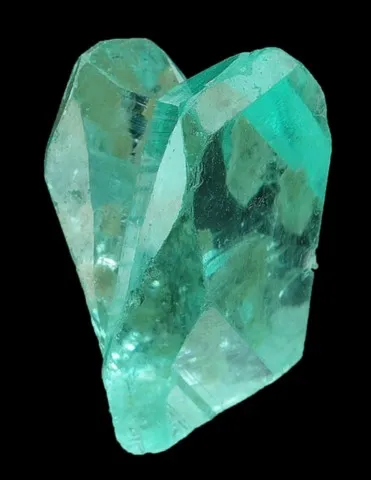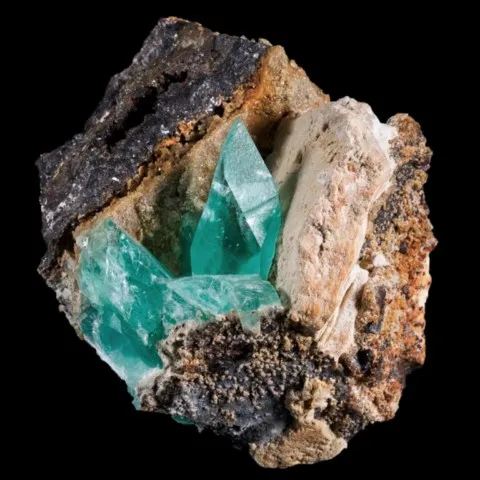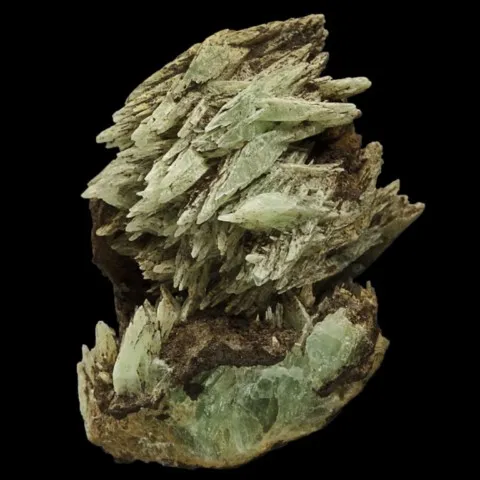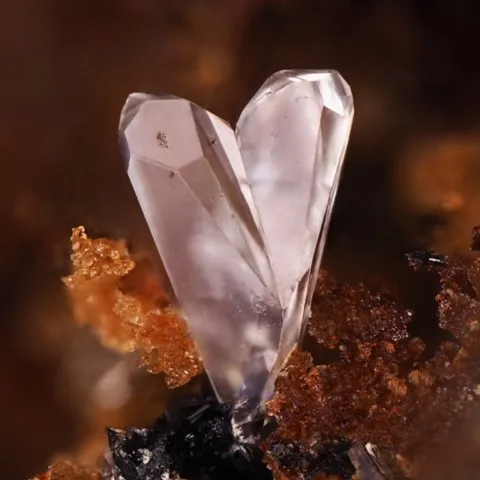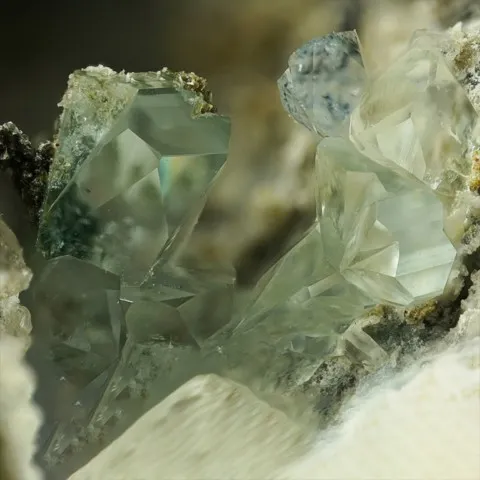PHOSPHOPHYLLITE
Class : Phosphates, arsenates, vanadates
Subclass : Hydrated phosphates
Crystal system : Monoclinic
Chemistry : Zn2(Fe,Mn)3(PO4)2 4H2O
Rarity : Rare to very rare
Phosphophyllite, like azurite, crocoite or dioptase, is one of these very attractive minerals because of their magnificent colors. It is a rare phosphate of secondary origin present in pegmatites and in the oxidation zone of metal deposits. Its name comes from its chemical composition (phosphate) and the Greek phullon (leaf) in reference to its perfect cleavage. Phosphophyllite occurs in short prismatic or thick tabular crystals, commonly twinned with a superb blue-green to green color for the most sought after; however, they can also be colorless. This mineral fluoresces strongly in violet under short-wave UV. It can be exceptionally cut into gemstones.
Main photo : Twinned phosphophyllite from Unificada Mine, Cerro de Potosí, Bolivia © Brighton Rocks
Phosphophyllite in the World
Twinning
No twins known for this mineral species.
Fakes and treatments
No fakes listed for this mineral species.
Hardness : 3 to 3.5
Density : 3.08 to 3.13
Fracture : Irregular
Streak : White
TP : Translucent to transparent
RI : 1.595 to 1.620
Birefringence : 0.021
Optical character : Biaxial -
Pleochroism : None
Fluorescence : Purple
Solubility : Acids
Magnetism : NoneRadioactivity : None

